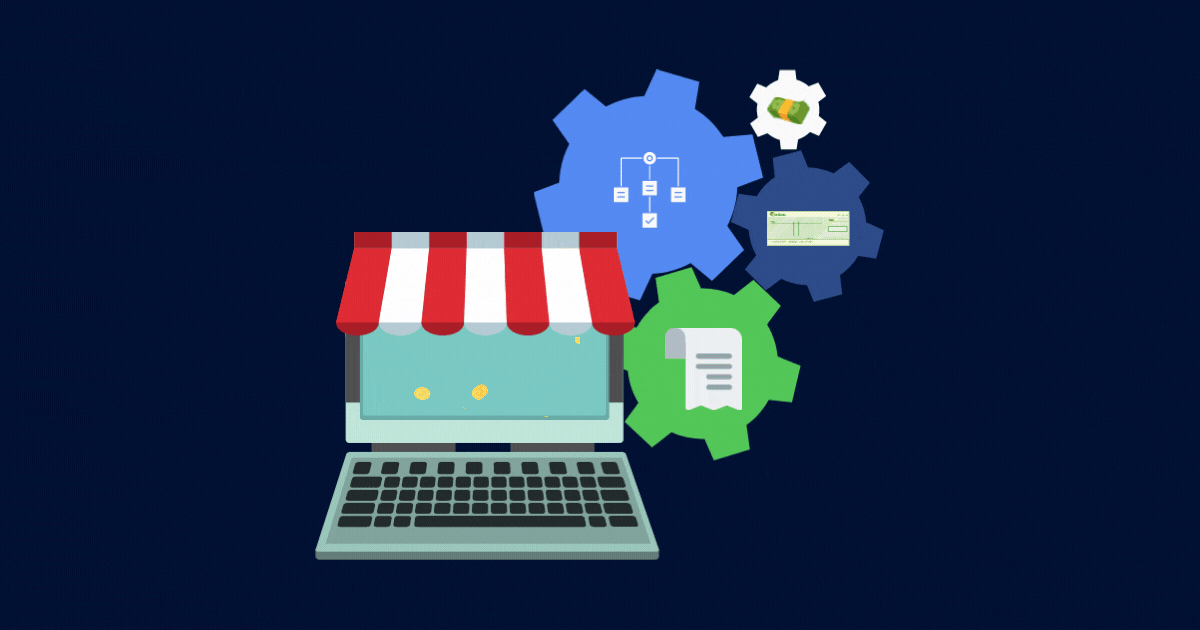
If you are involved in the financial management of a company or have an interest in business payments, you would’ve heard of ACH payments. But do you really know what ACH payments are or why ACH payments are beneficial for businesses? ACH payments have helped improve and reduce the workload of finance controllers of all business sizes, which is why an in-depth exploration to understand precisely what ACH payments are, is needed. Now, let’s dive into your complete and ultimate guide to ACH payments.
Shortcuts
What is an ACH payment?
How do ACH payments work?
Are ACH payments secure?
What types of businesses can benefit from ACH payments?
Is it possible to set up recurring payments?
What are the benefits of ACH payments?
How to send an ACH payment
How businesses can comply with ACH best practices
Types of ACH transactions
ACH payments, the end-all, be-all
What is an ACH payment?
ACH stands for Automated Clearing House (ACH), and the ACH Network is a centralized network of banks and financial institutes in the United States (USA). The ACH Network processes electronic financial transactions, which are ACH payments, also known as direct deposit or direct payment. The ACH Network is managed, administered, and governed by National Automated Clearing House Association (Nacha).
Businesses extensively use ACH payments to pay vendors or suppliers and receive payments from customers or clients. Moreover, ACH payments are often used by businesses to deposit salaries directly to employees’ bank accounts.
According to Nacha, “quarterly volume of 7.1 billion payments was an increase of 11.2% from the same period in 2020,” and “the value of those payments was $17.3 trillion, reflecting a nearly 19% increase from a year earlier.” Moreover, in 2021, compared to the first quarter of 2020, business-to-business (B2B) ACH payments volume saw a 17.3% increase. These statistics show how business payments are moving away from traditional payment methods, like paper check payments.
How do ACH payments work?
To initiate an ACH payment, obtaining banking information is the first step. Using Ploot, ACH payments can become extra simple as you will need to enter the banking detail (ACH Routing Number and Account Number) for only the first-time payment to a supplier or vendor. Starting the second payment, as all information is stored, you can simply enter the payment amount to process the payment.
If your business wants to set up an approval process before payments are processed, Plooto also offers an easy and straightforward payment approval workflow to process all business payments without a bottleneck.
As technology advances, the ACH Network is also continuously making enhancements to process ACH payments. Three to five business days are the standard expectation to process an ACH payment.
Your business can simply pay from anywhere at any time with Plooto, escaping from the pains of making paper check payments or visiting the bank to make a business payment.
Back to shortcuts.
Are ACH payments secure?
As the ACH Network is federally regulated and, as mentioned above, managed, administered, and governed by NACHA, ACH payments are processed securely. Moreover, using Plooto to make ACH payments strengthens the security of the payments as Plooto is certified under the ISO 270001 standard, an international standard.
Which type of businesses can benefit from ACH payments?
All sizes of businesses, nonprofits, and religious organizations can make ACH payments with Plooto. Free your business payment process from slow and stressful traditional payment methods to easy and hassle-free payment methods.
Is it possible to set up recurring payments?
With Plooto paying bills and getting paid electronically becomes simple and easy. Your business can schedule recurring payments to avoid penalty fees from missing a payment deadline.
Additionally, your business can collect recurring payments from your customers or clients. Automating your accounts receivable will allow your business to get paid faster, improving cash flow while reducing stress and struggles from chasing to collect payments.
Back to shortcuts.
What are the benefits of ACH payments?
Still unsure why ACH payment volumes are increasing, and the benefits of ACH payments are unclear? Here are few benefits of ACH payments that apply to all businesses.
1. Save on costs
Eliminate the cost of making payments using a paper check: printing, stamp, and mailing fees. Plus, don’t forget that time is money. Your business can save time on chasing to get signatures and making time to sign paper checks.
2. Improve security
Moving away from paper check payments will naturally diminish the risk of fraudulent activities associated with paper check payments. Moreover, as all information is encrypted and processed behind the screen, only those initiating the payment will have full access to the information, improving information security. Don’t forget Plooto is ISO certified, meaning using Plooto is even more secure.
3. Reduce manual work
Automating payments can reduce redundant manual work. Furthermore, Plooto automates the reconciliation process with your accounting software, reducing manual labor to save time.
4. Accurate record keeping that is easily accessible
With automatic reconciliation, human errors are reduced, making recordkeeping more effortless and accurate audit trails become more easily accessible.
5. Save time
This is a repeated theme across all benefits, and you have to admit that time is money. The total time saved can help to increase the productivity of employees.
How to send an ACH payment
1. Obtain the necessary banking information.
ACH payments are made from one bank to another, so the first step is to retrieve the payee’s detailed bank account information to know where to send payment to.
2. Set up one-time or recurring payments.
Depending on whether the goods and services you’re sending payment for are being purchased once or regularly, will determine how you process your payments. Recurring payments can be automated to remove the hassle of setting them up each time.
3. Obtain approvals, where necessary.
If you are the only stakeholder required to approve an invoice for payment, then you can skip this step. If you have multiple stakeholders who need to sign off, obtain approval from them before proceeding.
4. Enter the amount owing and debit date.
Enter how much you want your ACH payment to debit from your account and transfer to the payee’s bank account, as well as the date to make the transaction. ACH payments can be set up well in advance, and even stopped within a small window of time after processing.
5. Make the payment.
Once all the inputs have been entered, you can submit the payment to be debited from your bank account.
6. Vendor receives the payment.
Depending on the payee’s bank account, payments are typically received within 2 to 5 business days. As of 2022, the National Automated Clearing House Association (NACHA) is committing to reduce payment time to as fast as same-day payment.
How businesses can comply with ACH best practices
ACH stands for automated clearing house — it’s how banks send money electronically across borders. But even though most companies use ACH to pay vendors, employees and suppliers, many don’t know what they’re doing wrong.
The ACH network consists of thousands of financial institutions around the world. In addition to sending money domestically, those institutions also process international ACH transfers. These include wire transfers, such as Western Union and MoneyGram; checks; and electronic fund transfer cards like Visa debit cards and MasterCard credit cards.
For example, you might wire $10,000 to a friend in another city. Or you could write her a check. You could also use your credit card. All three methods require a bank account, and all three work just fine.
But some people think that ACH is too risky. They worry about fraud and identity theft. And they wonder why it takes so long to settle a bill.
To help answer these questions, we talked to Nacha, the nonprofit trade association that runs the ACH network. We asked Nacha to tell us what businesses must do to make sure they follow the rules.
ACH stands for automated clearing house. This payment method allows you to transfer money directly from one bank account to another without having to go through the check processing system. In fact, it eliminates the middleman altogether. However, ACH is considered one of the most secure ways to make online purchases because it uses encryption technology to ensure privacy.
The process is relatively simple. You log into your bank account and select "Payment Instructions." Then, you enter the amount of the purchase and choose whether you want this payment to be processed immediately or within 2-5 business days. Once the funds have been deposited in your recipient’s account, you receive an email confirming the transaction.
Types of ACH transactions
There are several types of ACH transactions: debit cards, credit cards, wire transfers, checks, and even payroll deposits. Debit cards are used to pay bills, while credit cards are used to buy things. Wire transfers are similar to checks; however, they require the sender to provide routing information so the recipient knows where the money came from. Checks allow people to send money to others via mail. Payroll deposits are used to deposit employee wages into employees' accounts.
In addition to the standard ACH options, there are many additional features that banks offer. For example, some banks offer free ACH transfers for certain customers. Some banks offer bill pay, allowing you to set up recurring payments like rent or utilities. Other banks offer mobile apps that allow you to complete transactions quickly and easily.
ACH payments, the end-all, be-all
ACH payments are a great way to transition from old, slow, problematic business payments to modernized, fast, and stress-free business payments. Get started with Plooto’s 30-day free trial to begin experiencing a modernized payment experience for your business.
Back to shortcuts.
Additional resources:













